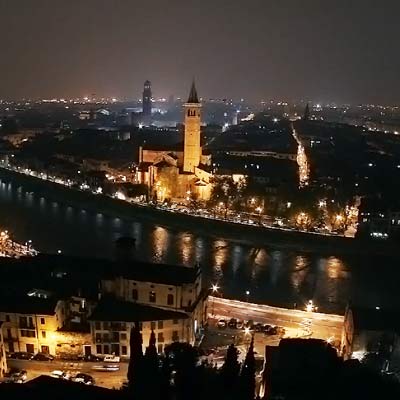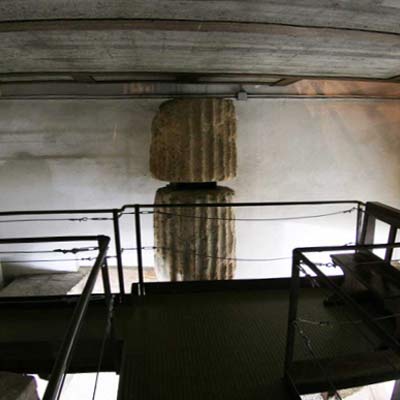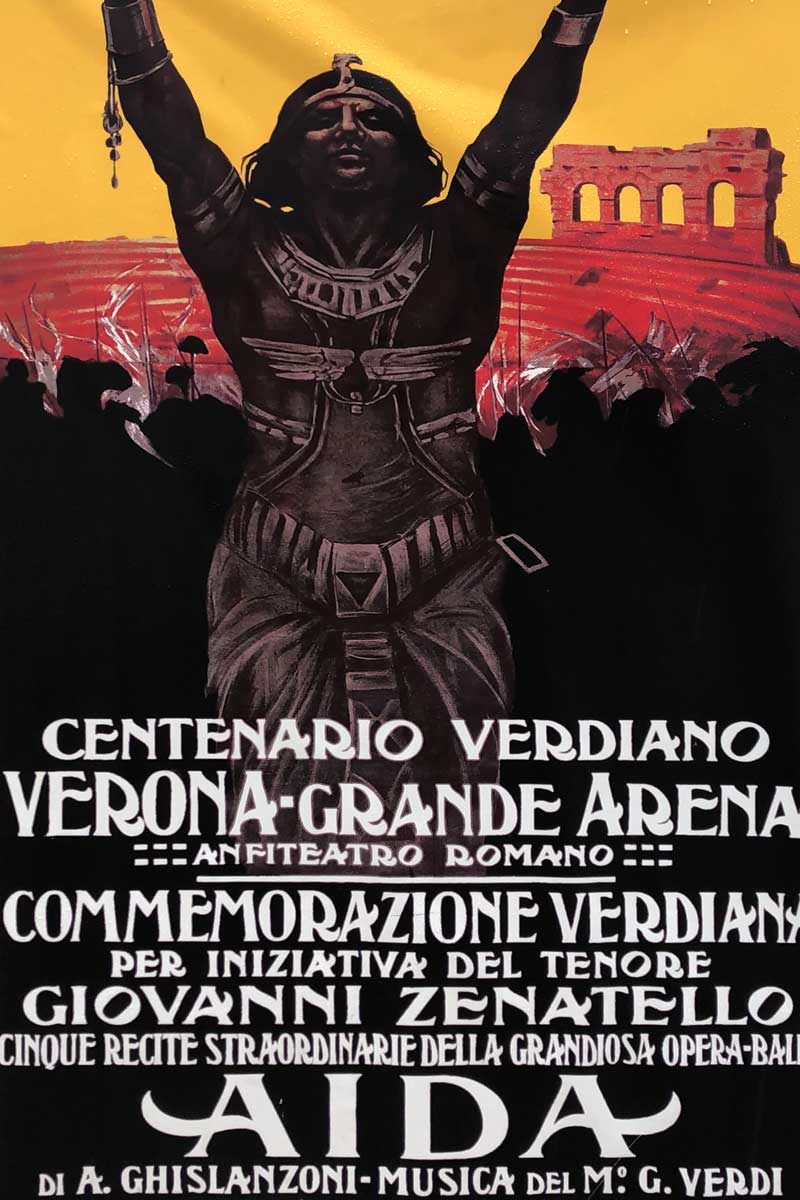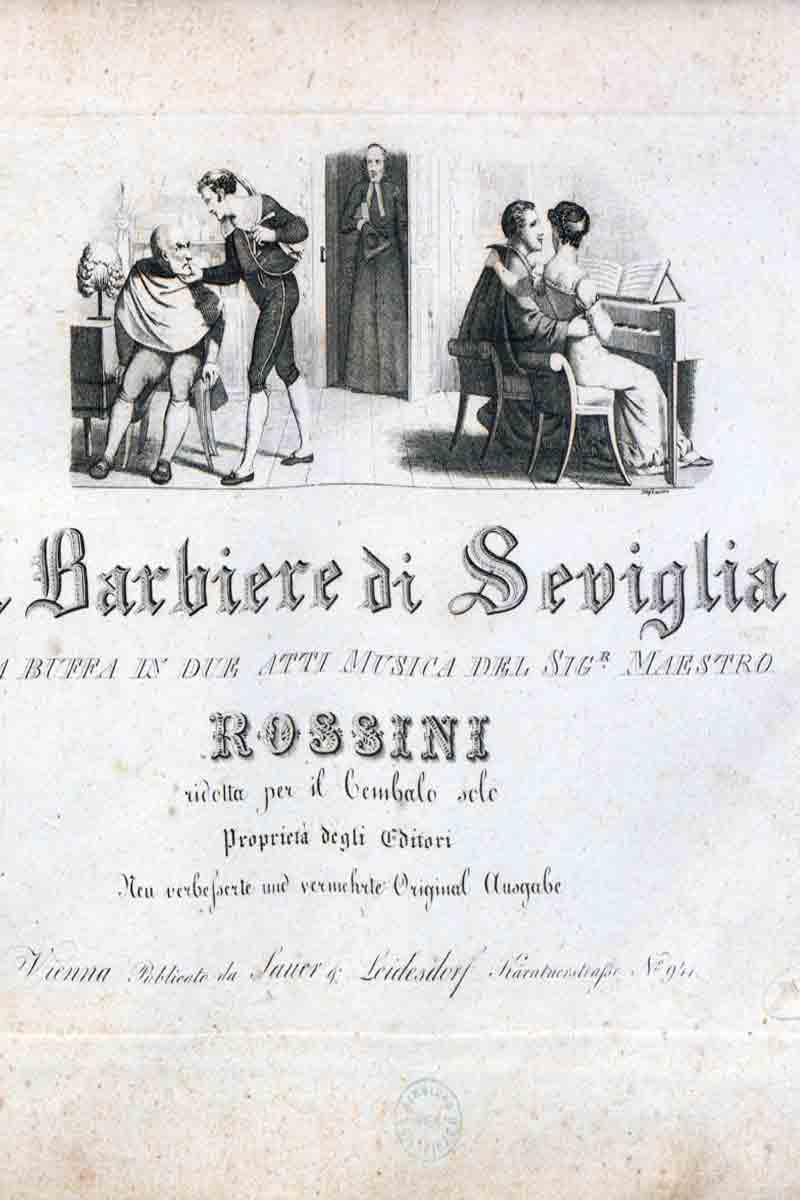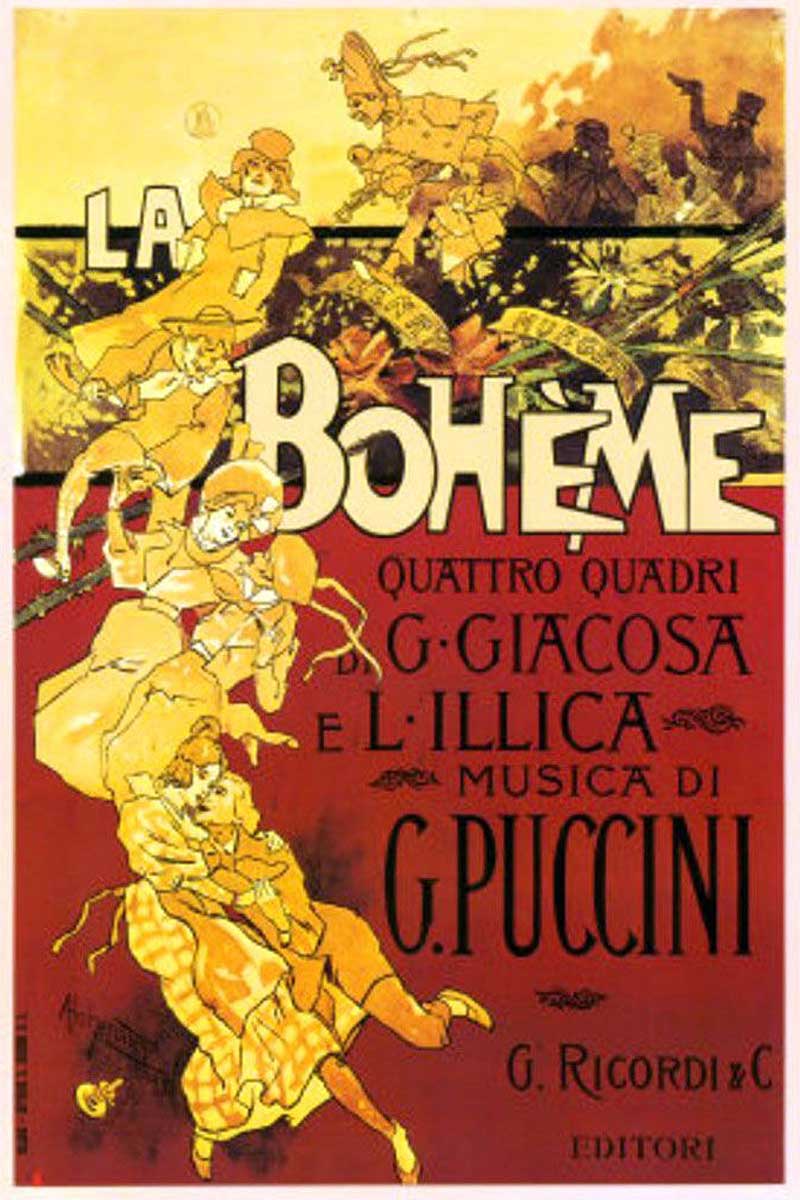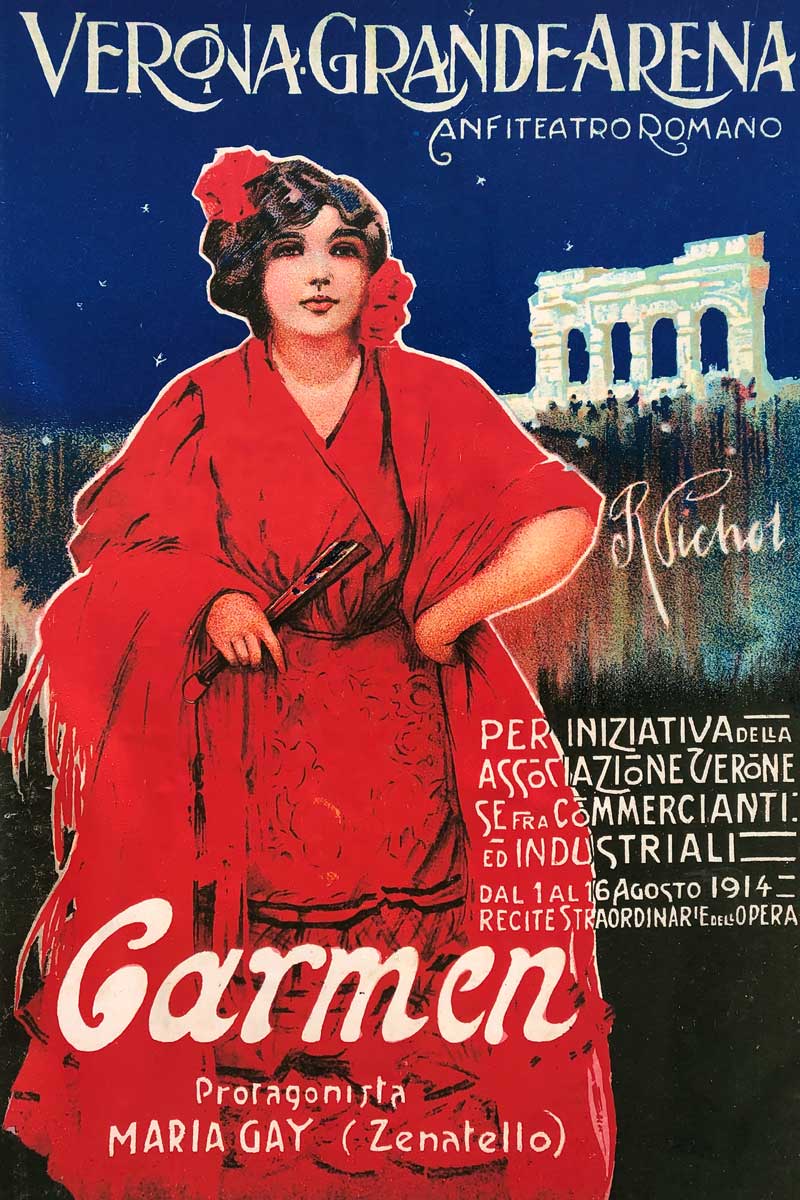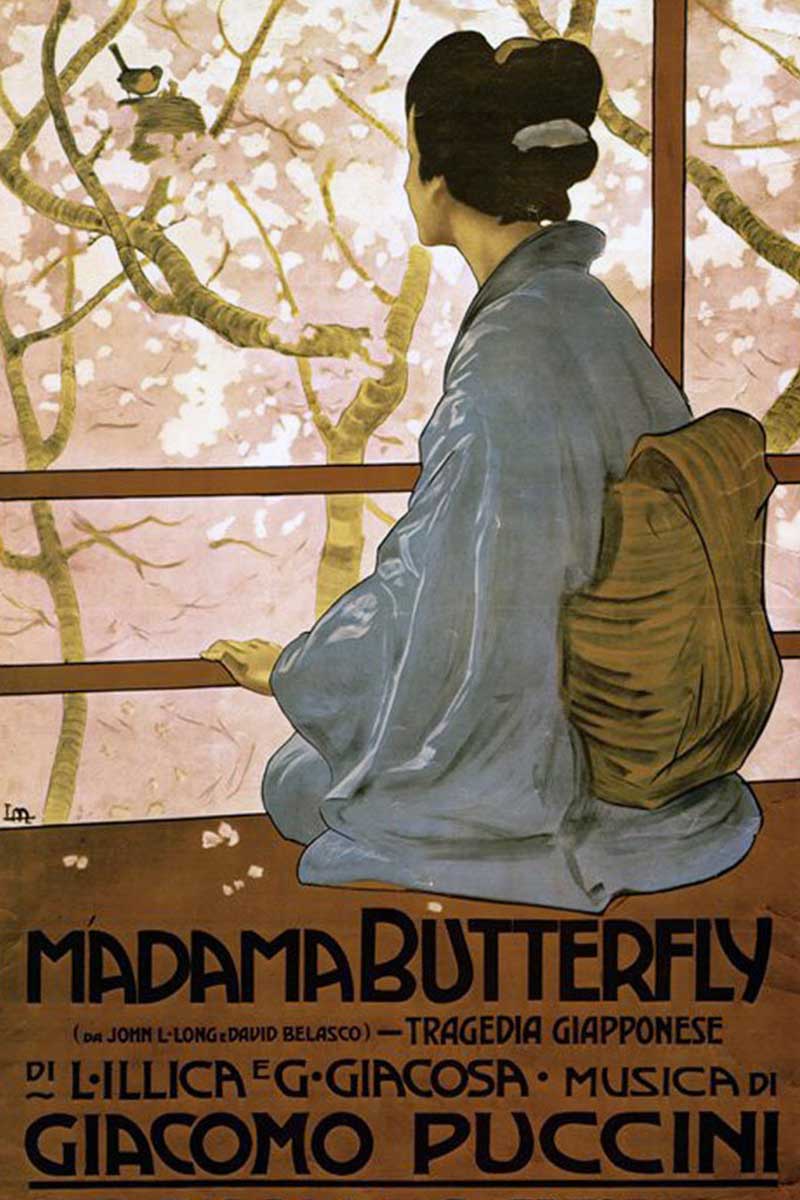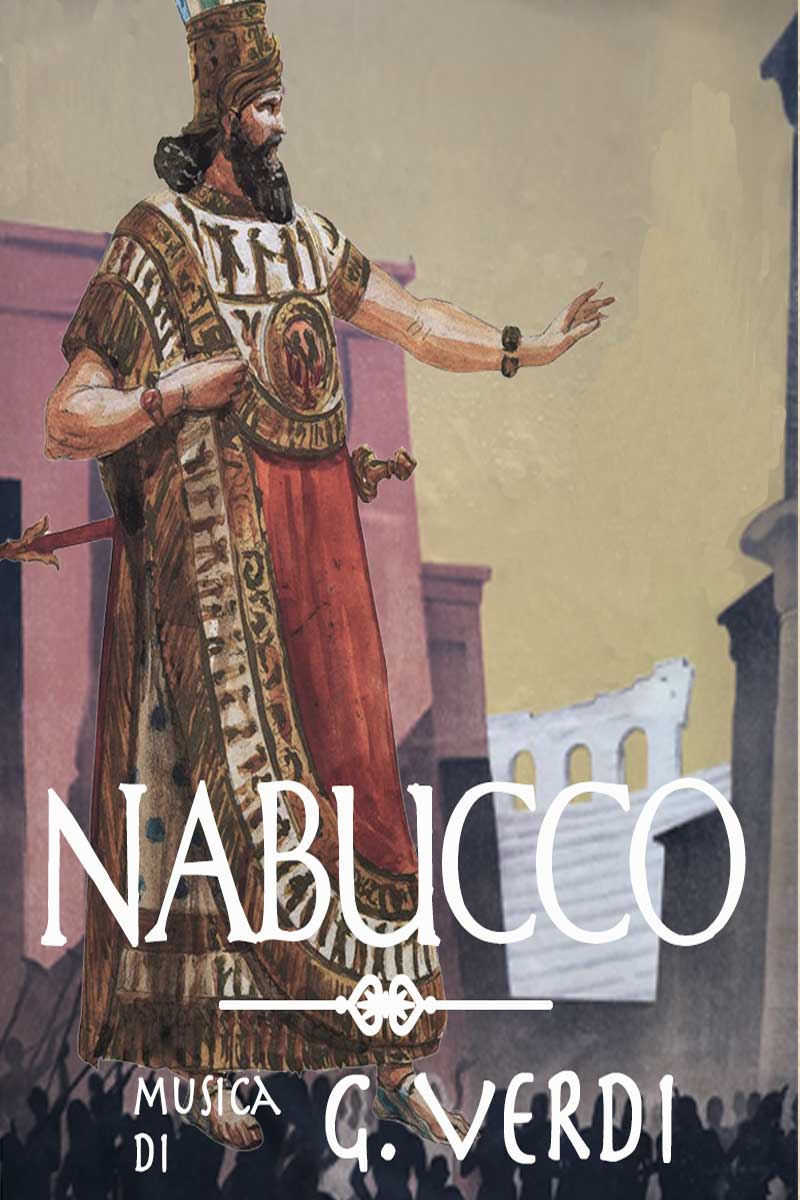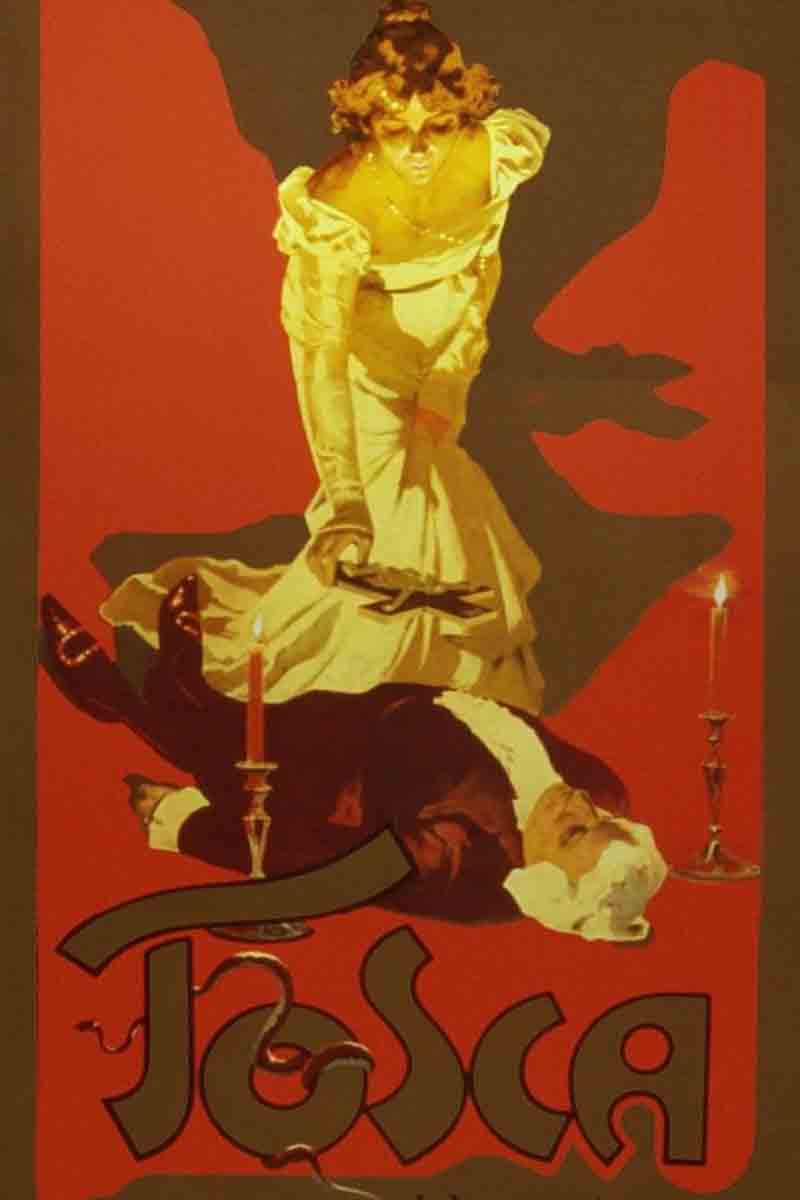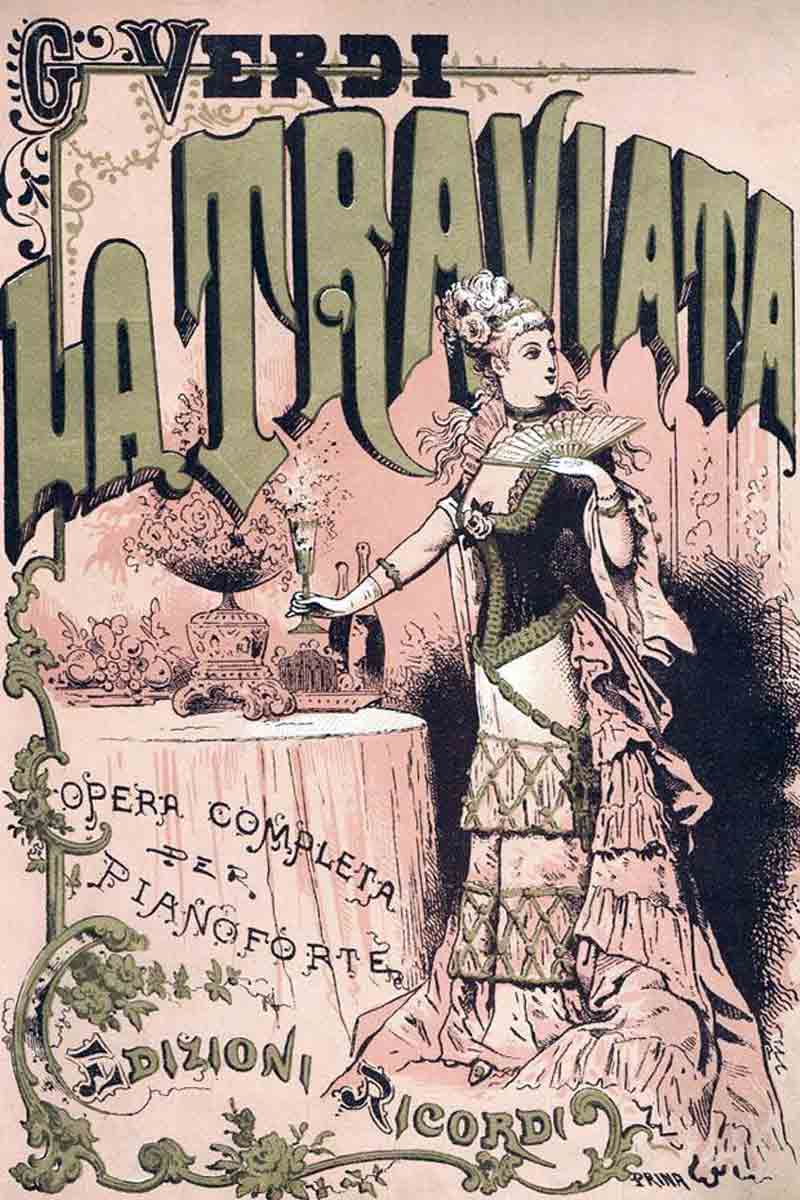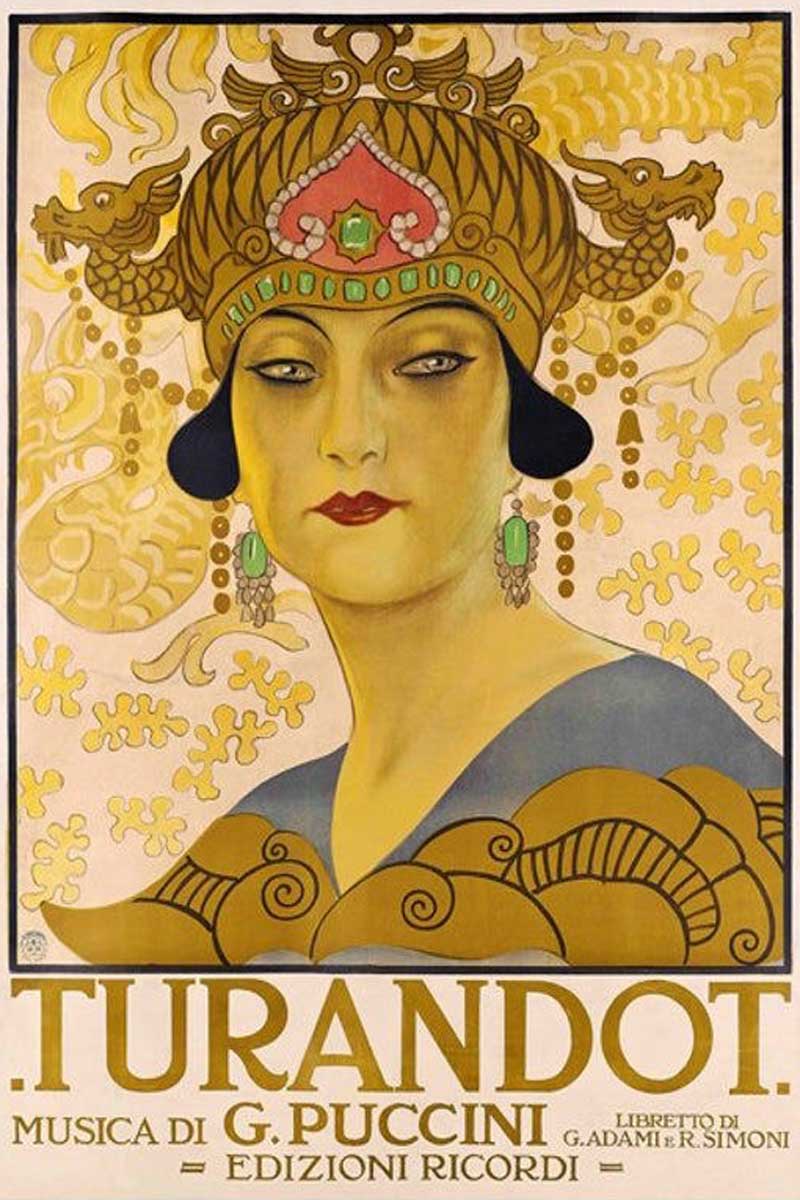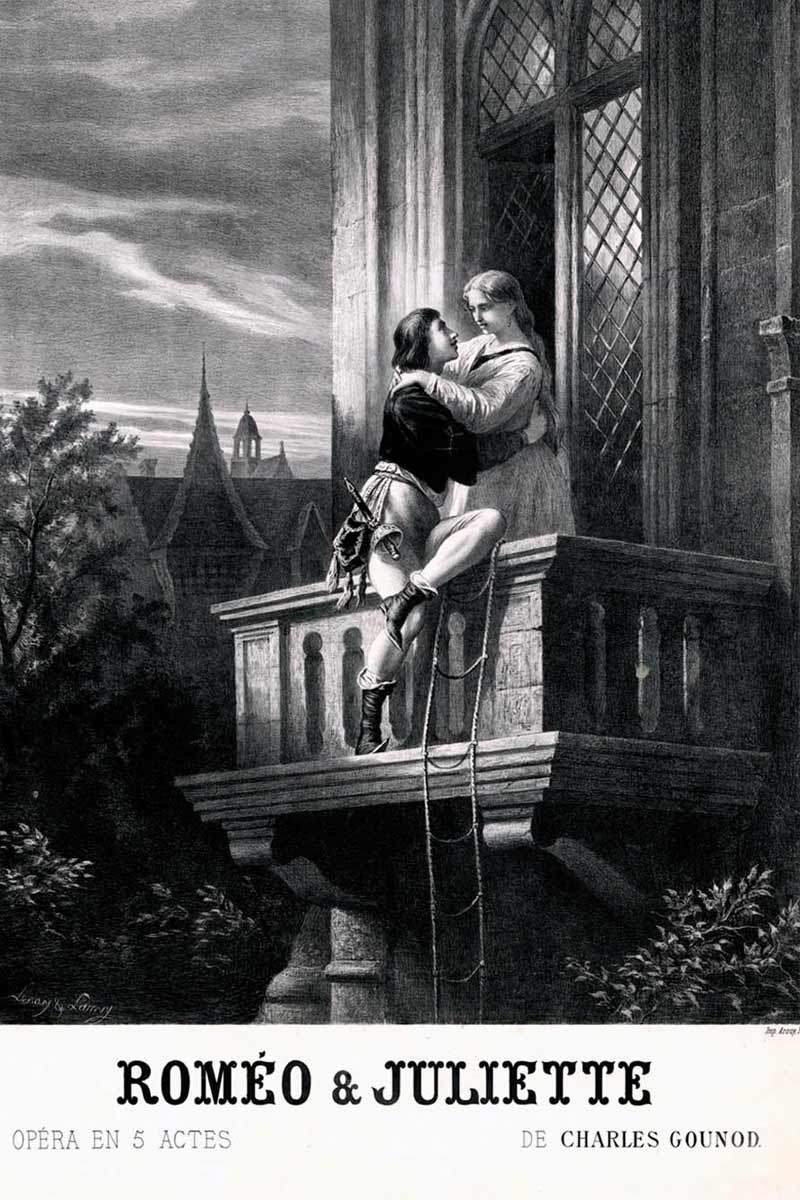Arena Opera Festival
The Opera Festival in the Arena of Verona is held every year in summer inside the Roman amphitheater. The performance program runs from mid-June to the end of August, with approximately 3-4 evening performances per week. Besides Verdi's Aida, which is performed every year, the program includes a selection of the most famous titles of the Italian opera tradition. The Arena di Verona, with its 15,000 spectators, is the largest open-air opera house in the world.
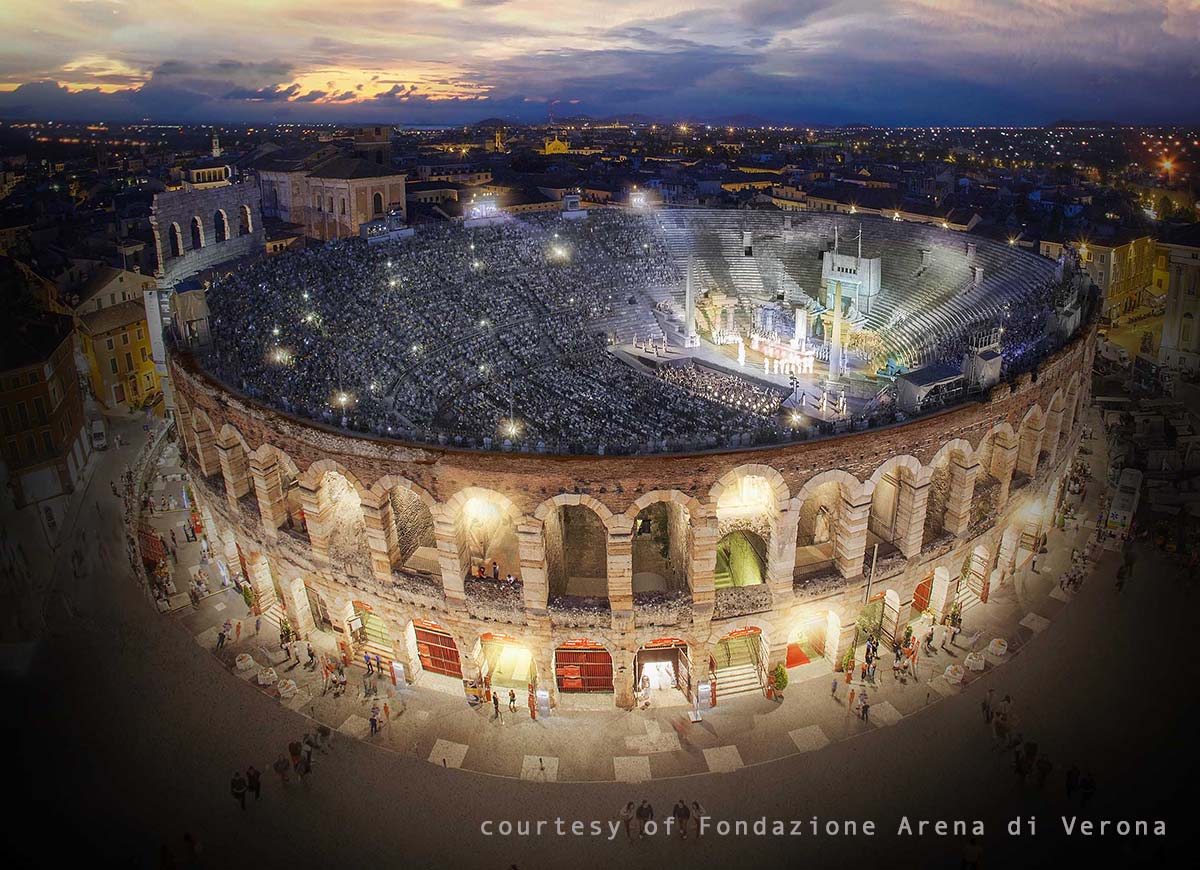
If you are in Verona to attend the opera, don't miss the opportunity to deepen your knowledge of the city with a tour guide. We have numerous proposals for guided tours, including themed ones, to discover Verona's long musical tradition.
Don't hesitate to contact us for more information about the updated Arena di Verona Opera Festival calendar and our guided tours.
Oncoming Tours
Info & Bookings:
+39 333 2199 645 info@veronissima.com P.I. 03616420232 C.F. CPPMHL74L13L781C
Useful Information
Here is some practical information to attend the opera in the Arena of Verona: where to buy tickets and what are the best seats, how to get there more easily and where to stay overnight.
Tickets
Tickets for Opera in the Arena can be easily purchased online at the Festival's official website: www.arena.it. The physical ticket office is located in Via Dietro Anfiteatro, right behind the Arena. It stays open until 10 minutes before the show starts and you can usually find some tickets still available even at the last minute.
Buying Guide
If budget is not an issue, the best seats, in terms of view and acoustics, are the "poltronissime" platinum and gold seats, which are in the first 10 rows of the stalls. The other stalls seats do not offer a good view but tend to be still quite expensive. For the same price it is better to opt for the stand seats from which you have a perfect view of the stage.
For medium budgets, the numbered side tiers have one of the best value for money.
For those who want to experience opera in the Arena on a budget, the non-numbered side tiers give you the chance to enjoy the show, perhaps with a less than perfect view, at very affordable prices.
Cushions
Stalls and stand seats have a fairly comfortable back and bottom cushion.
Numbered tiers have a folding seat and a backrest without cushioning.
The unnumbered tiers are the Arena's bare stone steps without any backrests.
It is possible and recommended to bring cushions from outside if you have seats without padding. You can also rent them inside the Arena. Sitting for two or three hours on the hard metal or stone of the Arena can be very uncomfortable.
Time
The opera starts at dusk, around 9:00 pm.
Ending time depends on the opera. For longer ones such as Aida and Nabucco it can be well past midnight.
Access
Each sector of the Arena has a different access from one of the numbered arches of the amphitheater. The gate number can be found on your ticket.
You may enter or leave numbered seats only during the intervals between acts. For unnumbered seats, however, you are free to arrive or leave whenever you wish.
Dress Code
Opera at the Arena di Verona is an outdoor summer festival. In July and August it can be very hot in Verona. Therefore, there is no strict dress code, but for the stalls seats, at least long pants and a polo shirt are required. As for the unnumbered seats, there are no particular rules regarding dress code.
Coming by Train
The Arena amphitheater is in Bra square, in the very center of Verona. It is pedestrian precinct.
The closest station is
Coming by car
L'uscita autostradale più comoda per raggiungere l'Arena è Verona Sud. Da lì basta proseguire dritti in direzione centro. Piazza Bra è in area pedonale. I parcheggi a pagamento più vicini sono: Cittadella, Arena (entrambi a non più di 5 minuti a piedi dall'anfiteatro), Centro (10 minuti a piedi).
Staying overnight
The opera ends late in the evening. Finding an available cab can be difficult. If there is the possibility the advice is to stay in an accommodation within walking distance from the Arena. The offer of hotels, vacation apartments, B&B is wide and varied.
Dining
On opera nights, many restaurants in downtown Verona operate a pre-opera and post-opera service. The kitchens are open from 6:00 p.m. to 6:30 p.m. so you can finish your meal in time for the entrance to the Arena. If, however, you don't feel like eating so early or get hungry when the opera ends, many of the restaurants in and around Piazza Bra keep their kitchens open for those who want to grab a snack before heading back to their hotels. Reservations are always recommended.
Let us know if you didn't find the information you were looking for:
+39 333 2199 645 info@veronissima.com P.I. 03616420232 C.F. CPPMHL74L13L781C
Operas in Arena
Basic information and a brief summary of the main operas most frequently staged at the Arena di Verona.
The history of the Opera at the Arena in Verona
At the origin of the Arena di Verona Opera Festival there is a legend.
In the early 1900s, tenor Giovanni Zenatello was visiting the Arena with friends. For fun, they ask him to improvise an opera aria. He accepted without hesitation and everyone, including Zenatello himself, was astounded by the acoustics and the scenic impact of the almost 2,000-year-old monument. It seems that the idea of performing an entire opera inside the Roman amphitheater was born.
If you want to know more
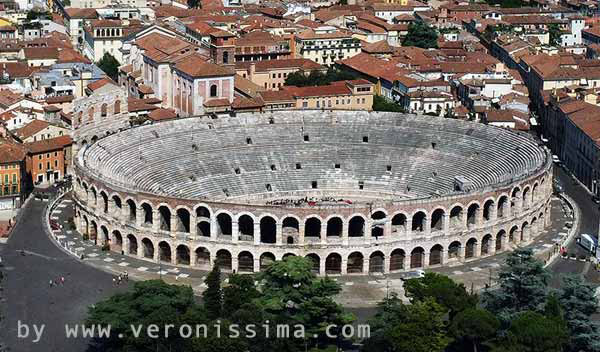
L'Arena di Verona
Dalle lotte dei gladiatori al Festival Lirico, la storia completa dell'anfiteatro di Verona.
VaiThe Aida
The inauguration was held in 1913 and Verdi's Aida was chosen as the performance. It was the perfect of opera for the ancient monumental venue. Giovanni Zenatello, who played the role of Radames, organized the whole event.
The premiere was so successful that the organizers immediately decided to stage the opera at the Arena of Verona every year. The event soon became an appointment that attracted artists and spectators from all over the world.
Since 1913, opera has been performed in the Arena every year without interruption, except during wartime and during the covid19 pandemic.
Maria Callas made her debut in Verona in 1947. In the 1970s, singers of the caliber of Pavarotti and Placido Domingo sang in the Arena. Franco Zeffirelli was the festival's longtime artistic director.
If you want to know more
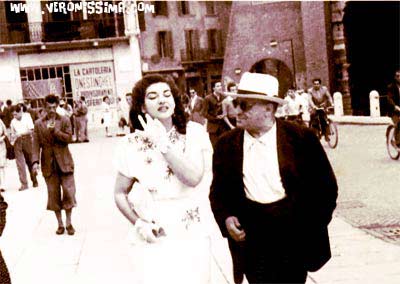
Maria Callas in Verona
From the debut at the Arena of Verona to the marriage with Giovan Battista Meneghini, all the places of the Divina in Verona.
VaiThe Opera in Verona Today
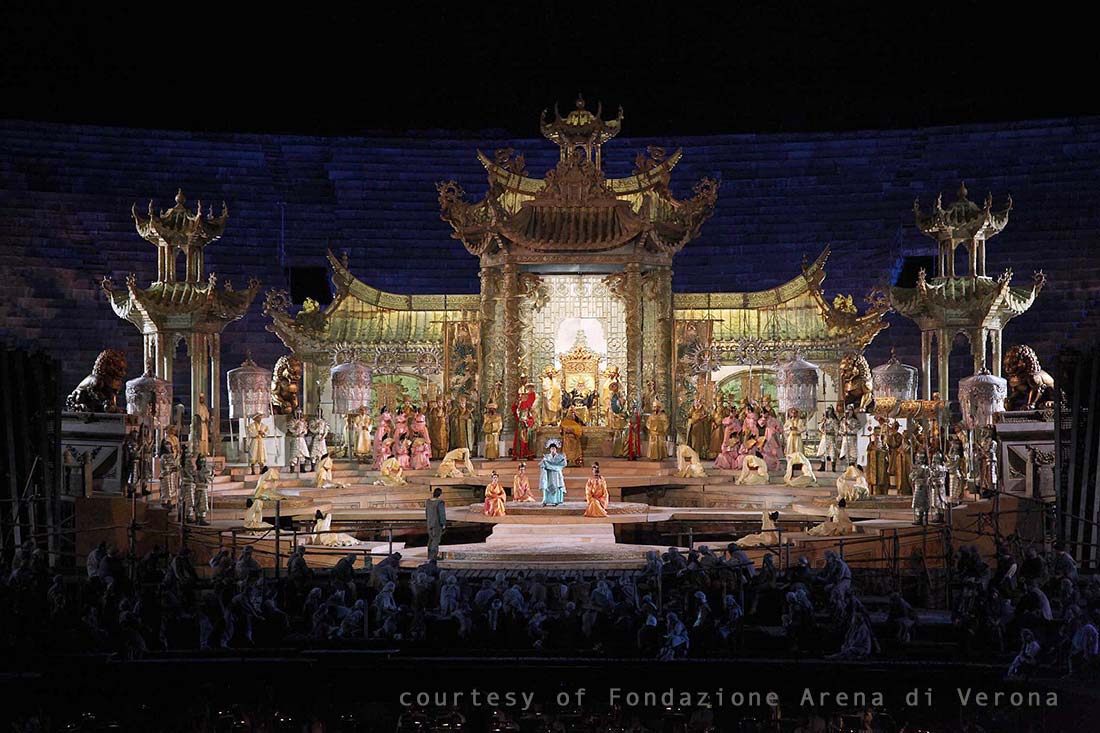
After more than 100 years, the Verona Opera Festival is still able to renew itself continuously and present world-famous artists, conductors and directors. The opera season is certainly the most important event of the summer in Verona.
There are many side events to the opera season in Verona. Gala evenings with famous opera legends, exhibitions of memorabilia related to the great Italian tradition, educational events. If you are a true fan or a simple neophyte you cannot miss a weekend in Verona to enjoy the special atmosphere of the opera.
Stage Sets
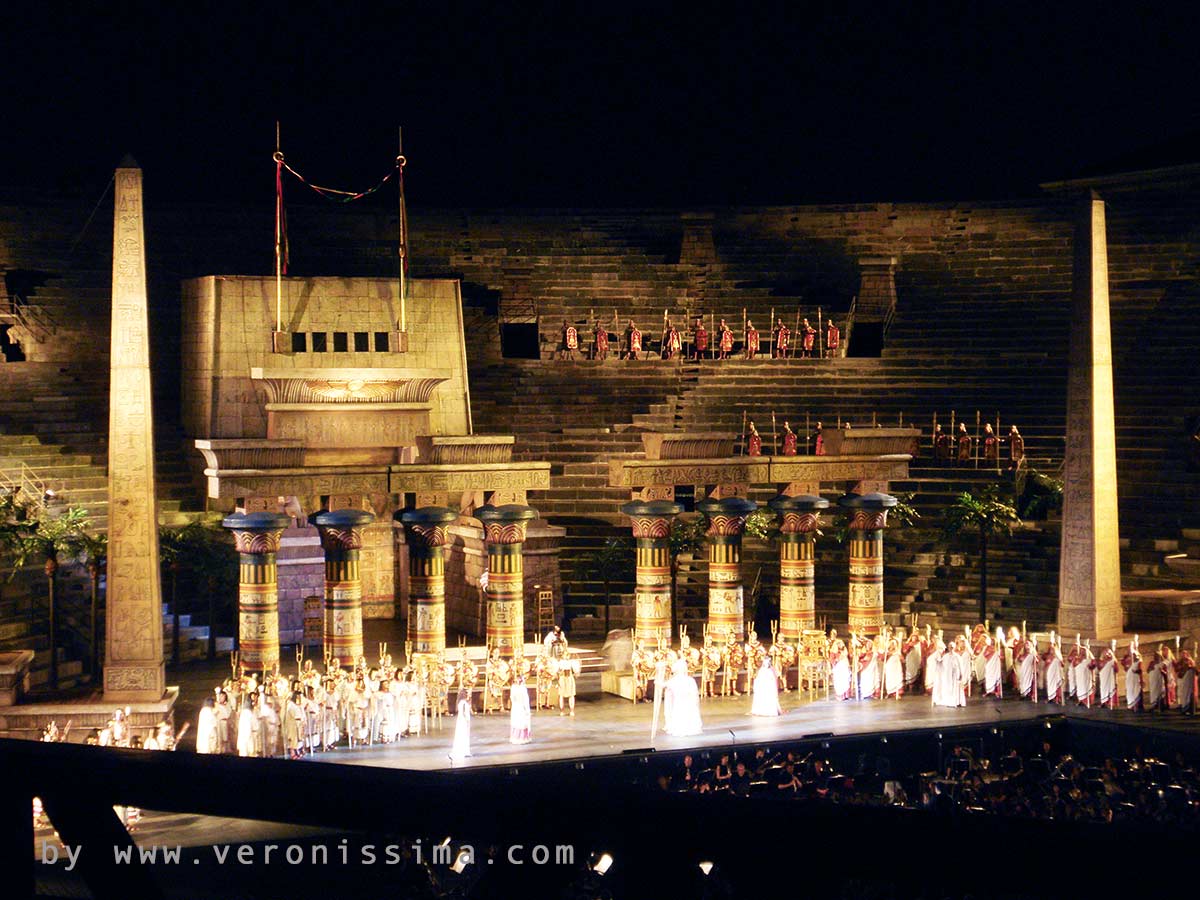
The grandiose spectacularity of the opera sets in the Arena is one of the reasons for the great international success of the opera season.
Each year, new sets are added with elaborate architecture, monumental statues, moving parts, lighting, and special effects that are a topic of discussion for opera lovers and enthusiasts alike.
The sets are changed from one day to the next depending on the playbill, often in less than twenty-four hours, by experienced and highly coordinated workers. To move the larger parts, a crane is used at the back of the amphitheater that can fold up and disappear before the show.
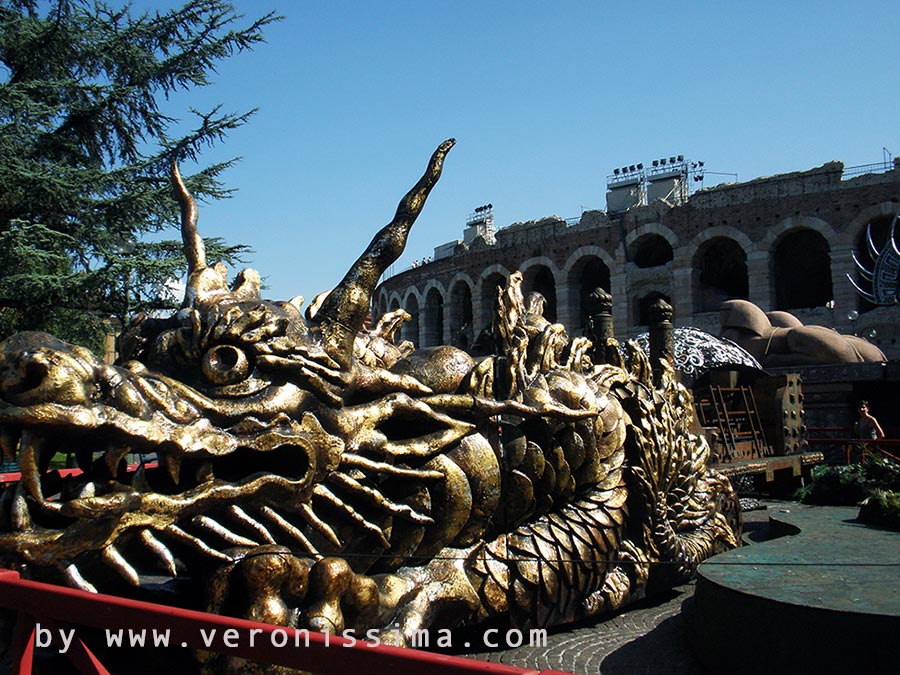
Between one opera and another, the sets that are not used are placed in specially prepared areas on Piazza Bra, right in front of the Arena. They thus become the spectacular background for the photos of tourists and visitors. (The image shows a detail of the sets for Turandot).
At the origin of stage set tradition
When the decision was made in 1913 to use the Arena to stage an opera, the organizers faced a major challenge. Since it was not a traditional theater, the stage had no proscenium (the frame that encloses the stage), no curtain but above all no attics or backstage from which to lower, move, and conceal the painted backdrops. Even the theaters of antiquity had a fixed scene in masonry that by convention depicted from time to time the environment required by the representation. But a Greek tragedy typically took place all in one space and time and adapted perfectly to the limitations of the set design. Now, on the other hand, it was a question of staging Aida, a complex nineteenth-century opera, with more than one setting, indoors and outdoors, minutely described by the author, with an audience accustomed to certain customs of the scenographic tradition of the time.
On the other hand, there was an immense space, monumental in itself, that could be used at will.
Ettore Fagiuoli
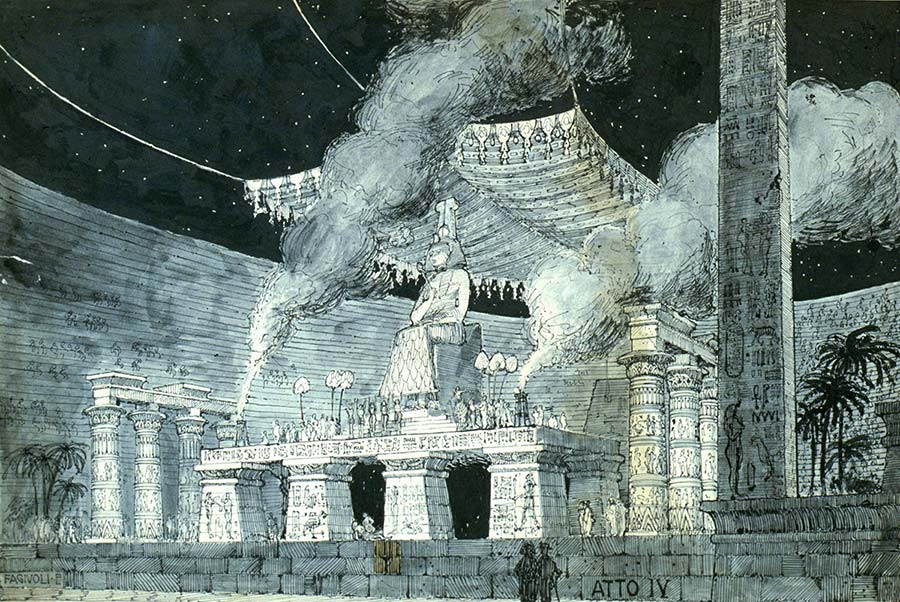
Sketch by Ettore Fagiuoli for the scenography of Aida, inaugural opera of the festival at the Arena of Verona in 1913.
The challenge was accepted by a young and promising architect from Verona: Ettore Fagiuoli. He had no experience as a scenographer, and the organizers felt that this was the very reason why he would tackle the task without preconceptions and with greater creativity. Ettore Fagiuoli adopted radical solutions for the set design of the opera in the Arena. First of all, he eliminated the very concept of a painted backdrop. The splendid red stone steps and arches of Verona, with their monumentality, would become an integral part of the setting of ancient Egypt. On the stage, Fagiuoli placed huge, ornate columns in the round, whose arrangement accentuated the depth of the scene. Gigantic statues, curtains, and a few additional plastic elements completed the imposing set design. The impact of the solutions adopted by Fagiuoli was exceptional and certainly one of the determining factors in the resounding success of the opera in the Arena. Ettore Fagiuoli contributed with his creativity also to the following editions of the festival, giving life to the tradition of the Arena's scenography based on three-dimensionality and monumentality. In some editions he used real elephants and camels during the famous triumphal march. Even today, from time to time, real horses make their entrance on stage.
If you want to knwo more
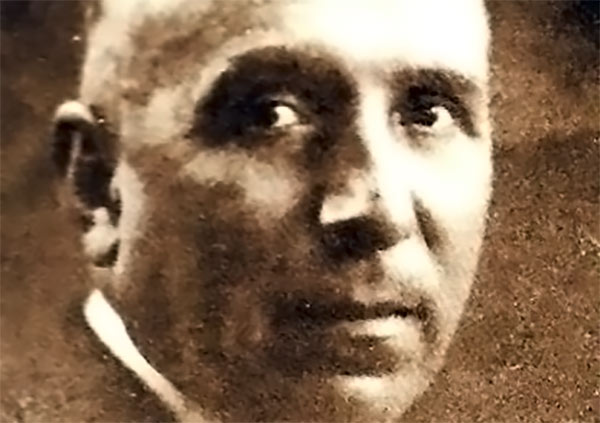
Ettore Fagiuoli
The most influential Veronese architect of the 20th century, set designer of the first operatic performances in the Arena.
VaiInfo & Bookings:
+39 333 2199 645 info@veronissima.com P.I. 03616420232 C.F. CPPMHL74L13L781C

 IT
IT 日本
日本 DE
DE FR
FR 中文
中文 ES
ES